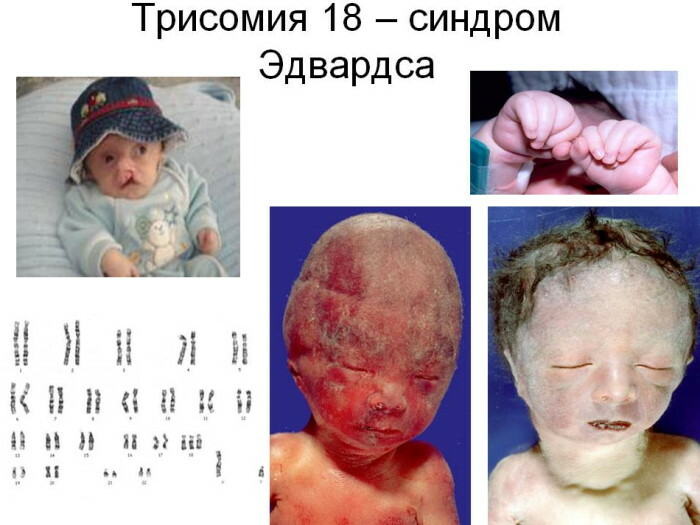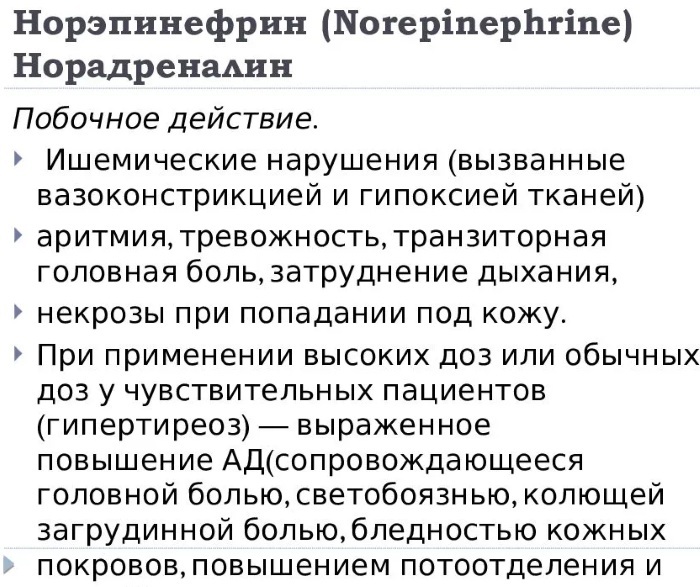Content
- What is a medical pedicure, its differences from a cosmetic
- Features and benefits of medical pedicure
- Indications for the procedure, what is included in the service
- Ingrown nail
- Core calluses
- Hyperkeratosis
- Cracks
- Deformation of the nail
- Onychomycosis
- Normotrophic onychomycosis
- Hypertrophic onychomycosis
- Atrophic onychomycosis
- Contraindications
- What you need to pay attention to before the procedure, preparation
- Stages of the procedure
- When is a medical pedicure powerless?
- Medical pedicure cost
- Medical pedicure video
The medical pedicure procedure includes a complex foot, nail plate therapy one or several toes at once, which have signs of disease, deformation changes, or have been damaged as a result of injury. This type of treatment simultaneously combines cosmetological care for feet and nails, as well as the use of methods for their restoration. All therapeutic measures are carried out in the sterile conditions of a medical institution.
What is a medical pedicure, its differences from a cosmetic
A medical pedicure is a therapeutic procedure performed by a medical professional. The main difference between this method of caring for nail plates is the implementation of a complex treatment of the nail and skin, localization of existing diseases, as well as their prevention occurrence. Timely execution of a medical pedicure is an alternative to surgical treatment of nail plates.
The main difference between this procedure and cosmetological care is that in his work the pedicure master focuses not on the aesthetic side, but is engaged in the restoration of a diseased nail. The cost of the therapeutic service includes the whole range of therapeutic measures, monitoring the condition of the nail plate during its recovery.
Features and benefits of medical pedicure
Medical pedicure is included in the list (the procedure is prescribed for adult men and women after a preliminary examination) one of the most demanded types of therapeutic care for patients with chronic nail diseases plates.
This method of treatment has the following features and benefits:
- it is used not to mask painful symptoms, but to achieve real results in the treatment of nail pathology;
- the therapeutic procedure is performed using professional equipment in the form of metal threads, cutters, blades and other tools, with the help of which any tasks of caring for a diseased nail plate are solved;
- in the process of carrying out medical manipulations, the specialist carries out high-quality removal of the affected fragments of the nail or particles of epithelial tissues without damaging healthy areas;
- all therapeutic actions are performed in conditions of complete sterility, which minimizes the risk of developing an infectious and inflammatory process;
- has a high performance indicator.
Medical practice shows that in 98% of cases, after completing a full course of medical pedicure procedures, patients do not face repeated occurrences of a similar nail disease. The manifestation of a relapse of the disease is minimized.
Indications for the procedure, what is included in the service
Medical pedicure is included in (the procedure is prescribed by a podiatrist with medical education or a surgeon) a list of the safest therapeutic manipulations to maintain the health of the nail plate.

Ingrown nail
Ingrowth of the nail plate into the soft tissues of the leg is a common pathology accompanied by severe pain that can make a person limp.
This disease can be recognized by the following symptoms:
- redness of soft tissues located in the circumference of the periungual roller;
- swelling of the skin;
- severe soreness of epithelial tissues, which occurs after palpation of the nail plate.
In especially severe cases, suppuration of the skin develops, located in the immediate vicinity of the nail. The selection of a treatment regimen depends on the general condition of the nail plate. In most cases, the therapy of this pathology involves the removal of an ingrown nail fragment, as well as its growth zone. The nail plate, which is completely affected by a fungal infection, has strong deformation changes, and has partially grown into the soft tissues of the finger, is removed entirely.
A patient who has consulted a podiatrist with symptoms of the initial stage of nail ingrowth undergoes a course of conservative treatment without performing surgical manipulations.
In this case, the specialist deduces the angle of the nail plate from its roller, prescribes a complex therapeutic procedures using anti-inflammatory baths, compresses based on antibacterial ointments. A prerequisite for treatment is to wear open and loose shoes in order to avoid injury to the affected area of the leg.
Core calluses
Medical pedicure is included in (the procedure is performed using special equipment in the form of cutters, mechanical brushes) a list of the most effective treatment methods that allow you to get rid of the rod corns. This type of dermatological disease is characterized by the presence of a subcutaneous rod, pressure on which causes a feeling of acute pain. The discomfort is intensified when walking in thin-soled shoes.
Core corn is characterized by the following symptoms:
- a small area of the skin of the foot becomes unusually hard (in most cases, this is a segment with a diameter of 0.5 mm to 1 cm);
- during palpation of tissues, a slight elevation is found;
- the epidermis in the area of localization of the core callus acquires a rich yellow or slightly grayish tint.
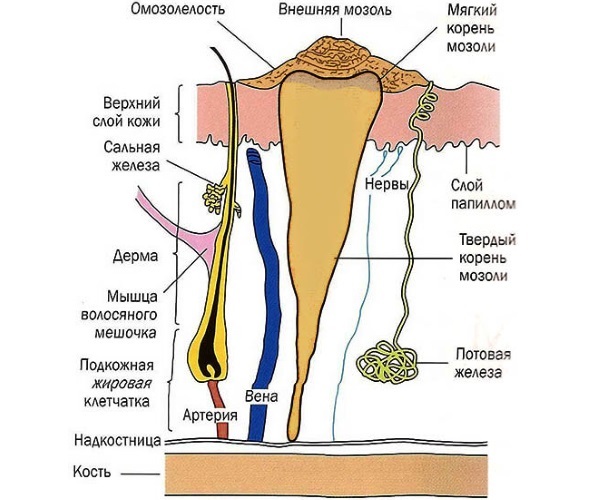 Even with a slight pressure on the rod of this formation, a feeling of stabbing pain appears. The larger the corn, the more intense the discomfort. The medical pedicure procedure allows for the painless removal of calluses. In this case, the painful neoplasm is cut out using a ceramic or diamond cutter.
Even with a slight pressure on the rod of this formation, a feeling of stabbing pain appears. The larger the corn, the more intense the discomfort. The medical pedicure procedure allows for the painless removal of calluses. In this case, the painful neoplasm is cut out using a ceramic or diamond cutter.
It is very important that the treatment of stubble corns is started in the early stages of its formation. After the therapeutic procedure, patients should wear comfortable shoes, wear socks and tights without seams that squeeze the plantar part of the foot, and use orthopedic insoles.
Hyperkeratosis
Hyperkeratosis is a dermatological disease that is manifested by excessive thickening of the stratum corneum with a simultaneous slowing down of the physiological process of desquamation of epidermal cells. The result of this pathology is the formation of a spherical nail, its yellowing, a change in density.
The nail plate, affected by hyperkeratosis, becomes brittle, loses its former elasticity. This disease is characterized by a chronic form of the course, which is constantly progressing. Hyperkeratosis is capable of spreading to adjacent nails, affecting the epithelial tissues of the fingers.
The medical pedicure procedure allows you to completely get rid of hyperkeratosis, and also minimizes the risk of recurrence of this pathology. The treatment tactics are determined by the podiatrist after the diagnosis of the diseased nail plate. If there are signs of a fungal infection, a course of therapy with antimycotic ointments and drops is prescribed.
At different stages of treatment, the doctor performs the correction of the diseased nail, removing its surface layers, which have signs of keratinization. In this case, a mechanical cutter is used. The number of medical pedicure procedures depends on the neglect of hyperkeratosis.
Cracks
Cracks in the feet of the lower extremities are a painful condition of the skin of the legs, which is treated by a podiatrist. In order for the therapy to be successful, there was no relapse of the disease, the cause that causes the epithelial tissue to dry out is determined. Separated by superficial and deep cracks in the feet.
The first type of dermatological damage does not cause discomfort, but it provokes the appearance of aesthetic defects. Deep cracks cause attacks of severe pain, bleeding, and after they heal, cicatricial changes in the skin are formed.
The podiatrist examines the skin surface of the foot. Then the doctor prescribes a comprehensive diagnosis of the body to the patient in order to determine the nature of the origin of these cracks. Based on the results of the examination, an individual treatment regimen is selected. In this case, you cannot limit yourself only to medical pedicure techniques.
Podiatrist removes the stratum corneum located in the immediate vicinity to the wound, applies softening and moisturizing creams that prevent further cracking feet. In this case, the patient is prescribed a course of drug therapy aimed at combating the underlying disease of the body that provokes drying out of the skin.
For example, treatment:
- chronic allergies;
- fungus of the feet;
- endocrine disorders;
- vitamin deficiency.
Deformation of the nail
Deformation changes in the nail plate occur under the influence of various factors. These can be the consequences of a previous fungal infection, severe finger injury, acute deficiency of vitamins and minerals. Regardless of the nature of the origin of this pathology, medical pedicure allows you to restore the normal appearance of the nail plate.
This therapeutic procedure is indicated for the treatment of nail deformities of the following types:
- transverse and longitudinal grooves;
- bulge of the nail plates;
- concavity of the nail.
The most difficult is the deformation, which gives the nail plate a "thimble" shape. Treatment of these nail pathologies involves the use of local antimycotic drugs. For example, if the deformation of the tissues is caused by a fungal infection. Depending on the degree of damage to the nail, the podiatrist uses a mechanical cutter to carry out full or partial resection of the deformed plate.
After removing the tissues, the doctor prescribes the patient a course of restorative therapy, which includes salt baths, treatment of the nail bed with anti-inflammatory and antiseptic agents. This approach will eliminate the risk of complications in the form of an infectious or inflammatory process.
Onychomycosis
Onychomycosis is an infection of the nails caused by fungal microorganisms. With this disease at least once, but about 26% of the total population of the world have encountered. With the help of medical pedicure techniques, the podiatrist treats several types of onychomycosis.
Normotrophic onychomycosis
Onychomycosis of the normotrophic type is a lesion of the nail plates without their further thickening, as well as without the formation of signs of hyperkeratosis. This disease is characterized by increased fragility of nails, loss of their elasticity, as well as the appearance of signs of pronounced yellowing of tissues.
Hypertrophic onychomycosis
This type of onychomycosis occurs due to a complete lack of treatment or ineffective therapy for a fungal infection of the nail. The patient has subungual hyperkeratosis, thickening of the nail plate, which persists for a long period of time.
Atrophic onychomycosis
Onychomycosis of the atrophic type is the most severe stage of nail damage. This disease is accompanied by yellowing of the nail plate, its thinning and detachment from the soft tissues of the finger. There is necrosis of the tissues of the diseased nail.
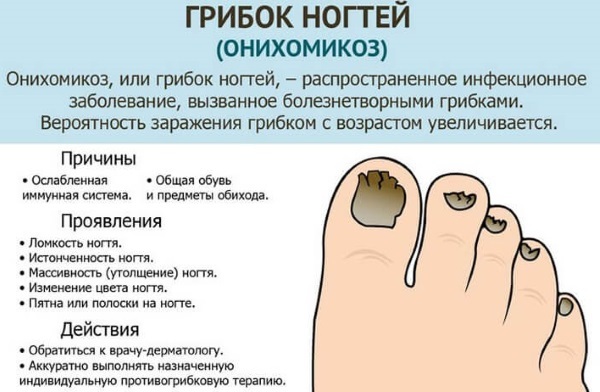
The tactics of treating onychomycosis depends on the extent of the pathological process and the type of disease. The podiatrist prescribes therapy for the patient with antifungal ointments, creams and drops. The affected part of the nail plate is resected using a cutter. After completing the course of antifungal therapy, a new one grows at the site of the removed nail, which has no signs of onychomycosis.
Contraindications
Medical pedicure is included in (the procedure is prescribed only if there are no inflammatory diseases of the skin in the foot area) a list of therapeutic procedures that are characterized by prolonged effect.
This method of treatment of nail plates and epithelial tissues of the plantar part of the leg has the following contraindications:
- all types of diabetes mellitus;
- hematological diseases associated with a violation of the blood coagulation process;
- too thin cuticle structure;
- severely deformed and damaged nail plates that require surgical therapy;
- inflammatory processes in the tissues under the nail, as well as in the area of the foot (in this case, it is necessary to carry out a comprehensive treatment of sore skin, and then proceed to the stage of medical pedicure);
- neuropsychiatric disorders.
The presence of the above diseases should be reflected in the patient's medical history. Every person wishing to undergo a medical pedicure procedure is obliged to notify their cosmetologist about any health problems. Before starting the treatment process, the patient should tell the doctor about what medications he is currently taking. This will minimize the risk of complications associated with the medical pedicure procedure.
What you need to pay attention to before the procedure, preparation
Before going to the podiatrist, you should thoroughly wash your feet using warm water and toilet soap. After completing the hygiene procedure, the skin of the lower extremities is thoroughly wiped off with a clean dry towel. It is not recommended to apply moisturizers to the skin of the feet or use other cosmetics.
A medical pedicure is a therapeutic procedure that does not require a lot of preparatory steps. If necessary, the doctor himself will determine which drugs or cosmetics should be used in a particular clinical case.
Stages of the procedure
The table below shows the main stages of the medical pedicure procedure that each patient with a disease of the nail plates undergoes.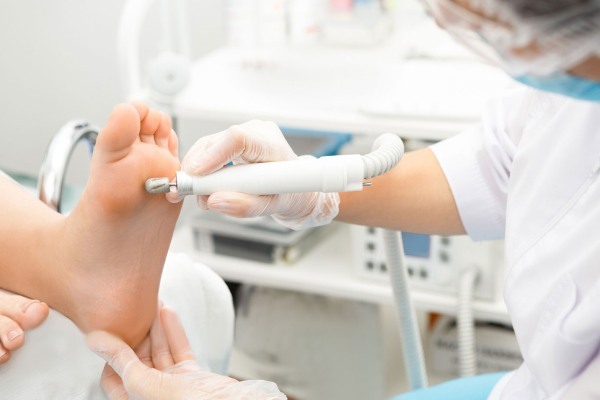
| Stages of medical pedicure | Characterization of the therapeutic process |
| Stage 1. Conversation with the patient and his psychological preparation for the procedure. | At this stage, the podiatrist explains to the patient what therapeutic actions will be performed to treat the diseased nail. After that, the specialist clarifies with the patient under what circumstances the development of this pathology occurred. The causes of the painful condition of the nail plate are being established. |
| Stage 2. Examination of the diseased tissues of the finger. | The podiatrist performs a detailed examination of the nail, determines the severity of the disease detected, and also determines the possible presence of complications. |
| Stage 3. Diagnostics of the patient for the possible presence of medical contraindications. | Medical pedicure has a number of contraindications for its use in relation to patients with a number of chronic diseases of the body. At this stage, the task of the podiatrist is to study the patient's medical history. If necessary, the doctor prescribes the patient to take blood and urine tests and undergo hardware diagnostic methods. |
| Stage 4. Selection of the optimal treatment regimen. | Based on the results of a preliminary examination of a diseased nail, the podiatrist decides on the application of the scheme therapy, which will allow you to carry out a medical pedicure procedure with the achievement of the maximum therapeutic effect. |
| Stage 5. Carrying out a medical pedicure procedure. | The main part of medical pedicure involves the removal of a part of the nail plate, its correction using special instruments. At the same time, care is taken of the epithelial tissues located in the circumference of the nail fold. |
Upon completion of the therapeutic manipulations, the podiatrist moisturizes the cuticle and skin located in the circumference of the nail plate. This procedure does not provide for a decorative coating of the nail. In the presence of an infectious disease of the nail plate, the patient is prescribed an additional use of antifungal or antibacterial drugs in the form of a cream, ointment or drops. The duration of therapy is determined by the severity of the clinical case.
When is a medical pedicure powerless?
A medical pedicure is advisable if the tissues under the nail plate, as well as in the area of the plantar part of the leg, do not show signs of acute inflammation. This procedure is not performed for patients diagnosed with a progressive infectious process.
In such a situation, the podiatrist decides to refer the patient to a surgeon to sanitize the inflamed tissues of the leg. Patients of this category should undergo treatment and further rehabilitation in the hospital of the surgical department. Otherwise, the risk of complications and negative consequences for the patient's health increases.
Medical pedicure cost
The cost of a medical pedicure depends on the type of disease of the nail plate and its general condition. The table below shows the average prices for this procedure, taking into account the nature of the therapeutic manipulations.
| Actions performed by a podiatrist during a medical pedicure | The cost of the procedure |
| Ingrown toenail removal | From 500 rubles. |
| Removal of callus | From 100 rubles. |
| Working with a nail that is affected by mycosis | From 2500 rub. |
| Removal of subungual calluses | From 500 to 950 rubles. |
| Ingrown toenail treatment | From 600 to 1100 rubles. |
| Hardware pedicure of nail plates and feet affected by fungal infection | From 3500 rub. |
Most of the practicing podiatrists offer a comprehensive medical pedicure procedure costing from 2,500 to 5,000 rubles. In this case, therapeutic manipulations involve the implementation of all the necessary actions aimed at treating a diseased nail and epithelial tissues of the feet.
A medical pedicure is a medical procedure that includes a complex therapy of a diseased nail plate and epithelial tissues of the foot. A distinctive feature of this method of nail restoration is that all actions are performed by a qualified podiatrist with medical education.
The doctor of this profile does not specialize in creating aesthetically pleasing nail plates, but fights against their diseases and deformational changes. Medical pedicure is indicated for use in patients with signs of an ingrown toenail, lesions by fungal microorganisms, and subungual corns. The treatment procedure of this type is carried out in the sterile conditions of the cosmetology office.
Medical pedicure video
About medical pedicure:

